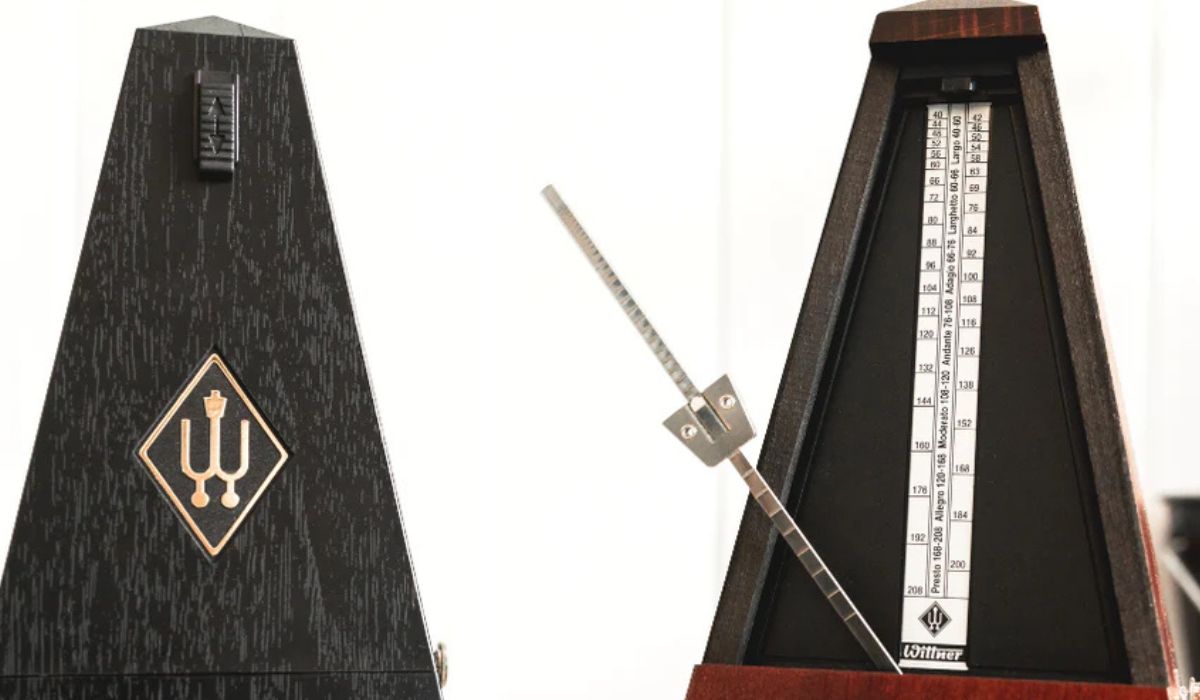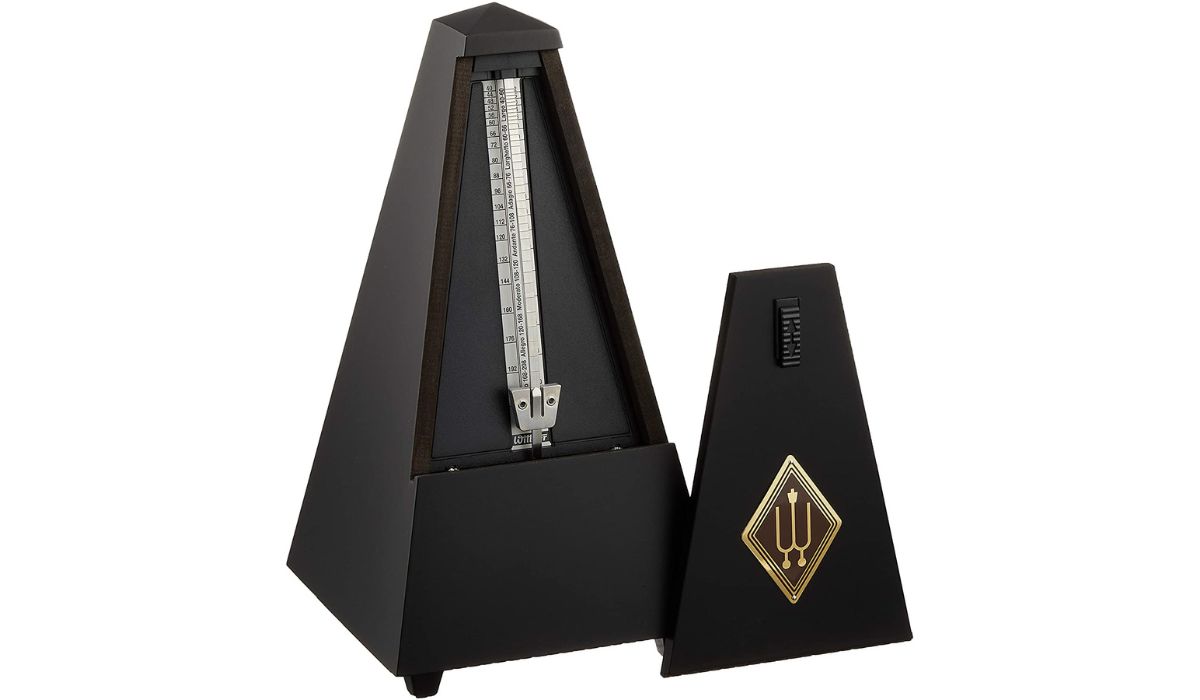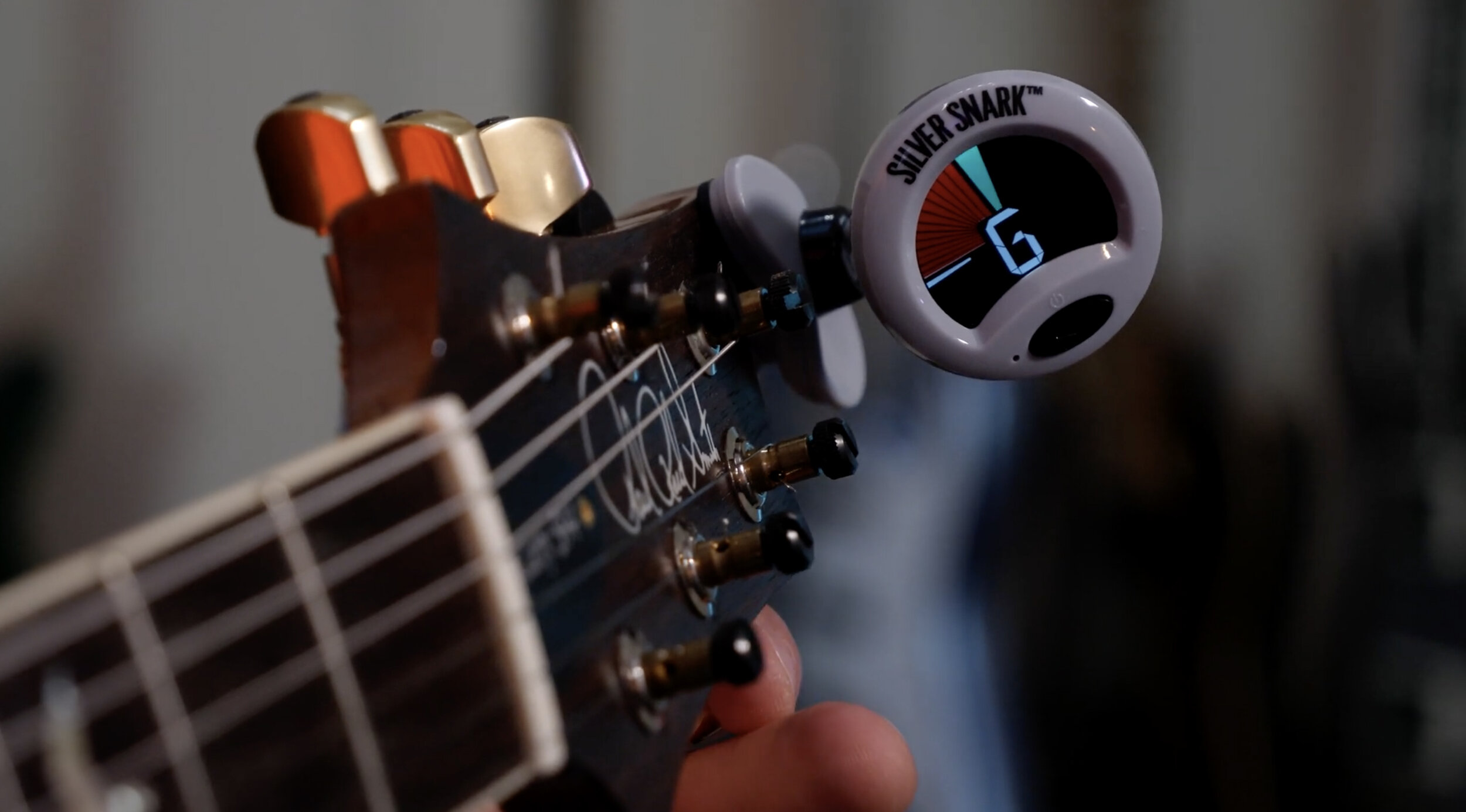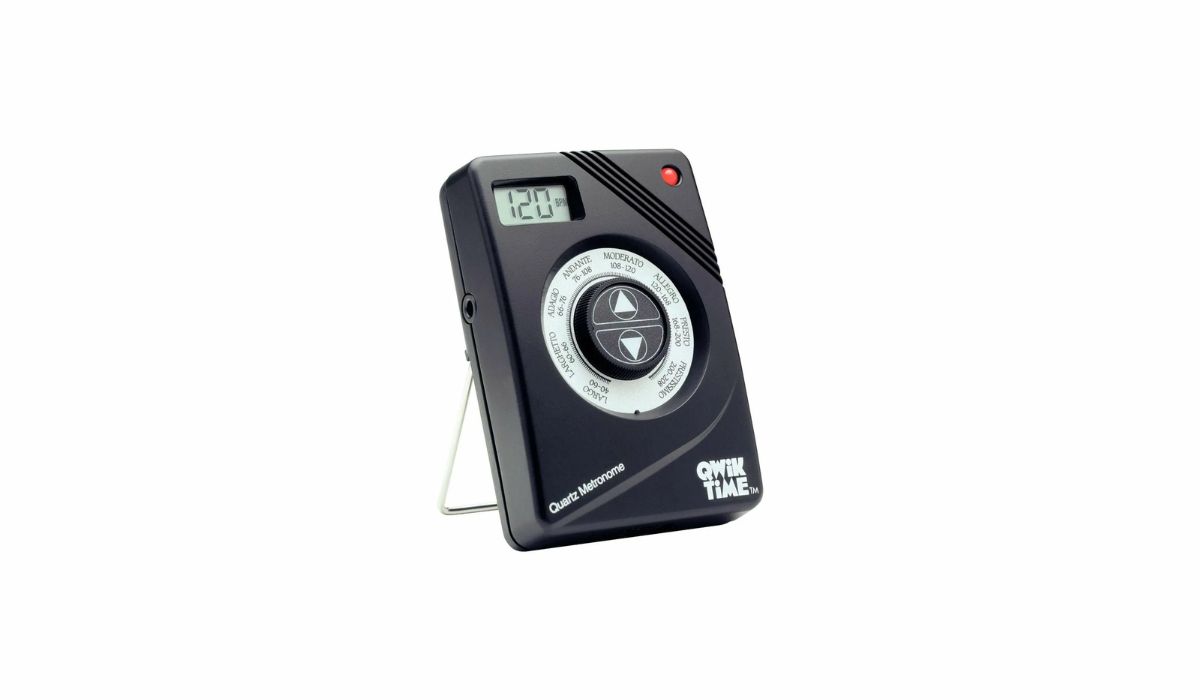Home>Production & Technology>Metronome>What Is A Metronome Tuner For Violin


Metronome
What Is A Metronome Tuner For Violin
Published: January 15, 2024
Learn how to use a metronome tuner for violin to improve your tempo and rhythm. Enhance your practice sessions with this essential tool.
(Many of the links in this article redirect to a specific reviewed product. Your purchase of these products through affiliate links helps to generate commission for AudioLover.com, at no extra cost. Learn more)
Table of Contents
Introduction
When it comes to playing the violin, precision and timing are of utmost importance. Whether you’re a beginner learning the basics or an experienced player honing your skills, having a reliable tool to help you maintain a consistent tempo is essential. This is where a metronome tuner comes into play.
A metronome tuner is a device specifically designed for musicians to assist them in keeping time and tuning their instruments accurately. Combining the features of a metronome and a tuner, this versatile tool proves invaluable for violin players.
With the advancement of technology, metronome tuners have become increasingly popular among musicians. The traditional metronome, with its pendulum-like motion, has been replaced by digital metronomes with added tuning capabilities. This article aims to explore the significance of a metronome tuner for violin players, how it works, the different types available, and how to choose the right one for your needs.
Whether you’re a professional violinist or just starting your musical journey, incorporating a metronome tuner into your practice routine can greatly enhance your playing abilities. So let’s dive into the world of metronome tuners and see how they can help you achieve your musical goals.
What is a Metronome Tuner?
A metronome tuner is a revolutionary device that combines the features of a metronome and a tuner in one compact unit. Traditionally, metronomes were used primarily to keep time and maintain a steady rhythm during practice sessions or performances. Tuners, on the other hand, were used to ensure that instruments were played in tune.
With the emergence of digital technology, metronome tuners have become increasingly popular among musicians, including violin players. This all-in-one device eliminates the need for separate metronomes and tuners, providing a convenient and efficient solution.
A metronome tuner typically features a built-in metronome function, allowing violinists to set and adjust the tempo according to their desired speed. This is particularly useful for practicing complex passages or improving timing accuracy. The metronome function provides a constant beat or click sound, helping violinists develop a sense of rhythm and maintain a consistent tempo throughout their playing.
Moreover, the tuner function in a metronome tuner allows violin players to fine-tune their instrument and ensure accurate pitch. By using either a microphone or a pickup, the device detects the sound produced by the violin and displays the corresponding pitch on a digital screen. This helps violinists make precise adjustments to their instrument’s tuning, ensuring that each note is played in tune.
Additionally, many metronome tuners offer additional features such as different tuning modes (chromatic, guitar, bass, etc.), transposition capabilities, and even recording functions. These added features make metronome tuners versatile tools that cater to the needs of different musicians.
Overall, a metronome tuner is an indispensable tool for violin players, providing them with the combined benefits of a metronome and a tuner in a portable and easy-to-use device. Whether you’re practicing at home, performing on stage, or recording in the studio, a metronome tuner will be your faithful companion in maintaining accurate timing and perfect pitch.
Importance of a Metronome Tuner for Violin
A metronome tuner holds immense importance for violin players of all skill levels. Here are some key reasons why incorporating a metronome tuner into your practice routine is crucial:
- Timing and Rhythm: One of the fundamental aspects of violin playing is maintaining a consistent tempo and rhythm. A metronome tuner provides a reliable audio or visual reference for keeping time, helping you develop a strong sense of timing. By practicing with a metronome tuner, you can improve your ability to stay in sync with the beat, enhance your accuracy, and develop a precise and steady rhythm.
- Technique Development: A metronome tuner can be an excellent tool for refining your violin technique. It allows you to break down challenging passages into smaller sections and practice them at slower tempos. This gradual approach enables you to focus on proper finger placement, bowing technique, and intonation. As you gradually increase the tempo, you can build muscle memory and improve your overall playing technique.
- Intonation Mastery: Playing in tune is a crucial skill for any violinist. A metronome tuner helps you refine your intonation by providing accurate and real-time feedback on the pitch of each note you play. By using the tuner function of the metronome tuner, you can detect and correct any inconsistencies in pitch, ensuring that you play each note with precision and in tune.
- Performance Preparation: When preparing for a performance or ensemble practice, using a metronome tuner helps you synchronize your playing with other musicians. It allows you to align your timing with the predefined tempo, ensuring a cohesive and harmonious performance. Moreover, practicing with a metronome tuner helps you develop the discipline to maintain a steady tempo even when nerves may arise during a live performance.
- Improving Musicality: A metronome tuner not only helps you develop technical proficiency but also enhances your musicality. By practicing with a consistent beat, you can explore different dynamics, phrasing, and musical expressions within a precise rhythmic framework. This opens up opportunities for creative interpretation and allows you to infuse your playing with artistic nuances, taking your musicality to new heights.
In summary, a metronome tuner is an invaluable tool for violin players that offers benefits ranging from improving timing and technique to refining intonation and musical expression. Incorporating a metronome tuner into your practice sessions will take your violin playing to the next level, helping you become a more confident and accomplished musician.
How Does a Metronome Tuner Work?
A metronome tuner combines the functionalities of a metronome and a tuner into a single device, making it a versatile tool for violin players. Understanding how a metronome tuner works can help you make the most out of this remarkable tool. Here’s a simplified breakdown of its functioning:
Metronome Function:
The metronome function of a metronome tuner provides a consistent beat or click sound to help you maintain a steady tempo. Here’s how it works:
- The metronome tuner has various tempo settings, allowing you to select your desired speed.
- Once you set the tempo, the device generates a steady beat or click sound at that specific tempo.
- Depending on the model, the metronome tuner may also include additional features such as accent beats, different time signatures, or a visual display of the beat.
By practicing with the metronome function, violin players can develop their timing skills, improve their rhythmic consistency, and play in sync with the desired tempo.
Tuner Function:
The tuner function of a metronome tuner allows you to fine-tune your violin and ensure accurate pitch. Here’s a breakdown of how it works:
- The metronome tuner captures the sound produced by your violin either through a built-in microphone or an external pickup.
- The device analyzes the pitch of the sound and displays the corresponding note or frequency on a digital screen.
- You can make adjustments to the tuning pegs of your violin according to the information displayed on the tuner’s screen to match the desired pitch.
- The display usually indicates whether the pitch is too high, too low, or in tune, helping you make precise adjustments.
By using the tuner function, violin players can ensure that each note they play is in tune, improving their overall intonation and the quality of their sound.
Some advanced metronome tuners also offer features such as different tuning modes for specific instruments, transposition capabilities, preset tuning settings, and even the ability to tune multiple strings simultaneously.
Overall, a metronome tuner works by providing a reliable metronome function to help you maintain a steady tempo and a tuner function to ensure precise tuning of your violin. By utilizing these features, you can refine your timing, improve your intonation, and elevate your overall violin playing.
Types of Metronome Tuners for Violin
Metronome tuners for violin come in various types, each offering unique features and capabilities to suit the diverse needs of musicians. Here are some common types of metronome tuners available:
- All-in-One Digital Metronome Tuner: This type of metronome tuner combines both metronome and tuner functions into a single compact device. It provides an integrated solution for keeping time and tuning your violin accurately. All-in-one digital metronome tuners often have easy-to-read digital displays, multiple tempo settings, tuning modes, and additional features like transposition capabilities.
- Clip-On Metronome Tuner: Clip-on metronome tuners offer a convenient and portable option for violin players. They can be clipped onto the headstock or pegs of the violin, allowing for hands-free operation. These tuners use vibration sensors or built-in microphones to detect the sound and provide visual or audible feedback. Clip-on metronome tuners are especially popular among live performers as they can be discreetly attached to the instrument.
- Smartphone Apps: With the advancements in technology, many musicians opt for smartphone apps that provide metronome and tuner functionalities. These apps utilize the phone’s microphone to detect sound and provide visual indicators or sound signals for tuning and timing. They often offer a wide range of features such as customizable tempo settings, different time signatures, and even recording capabilities.
- Multi-Function Metronome Tuner: Some metronome tuners go beyond the basic functions and offer additional features to cater to the specific needs of musicians. These may include a built-in recorder to capture practice sessions, a rhythm trainer to improve timing skills, or even connectivity options to sync with other devices or computer software for more advanced music production.
- Traditional Mechanical Metronomes: While less common nowadays, traditional mechanical metronomes are still available for those who prefer a vintage touch. These metronomes operate using a pendulum mechanism to provide a visual and audible reference for timing. While they may not have advanced tuning capabilities, they serve as a reliable tool for developing a strong sense of rhythm and tempo.
Ultimately, the choice of a metronome tuner for violin depends on personal preferences, specific requirements, and budget. Whether you opt for a dedicated device, a clip-on tuner, smartphone app, or a traditional metronome, the important thing is to find a metronome tuner that suits your needs and helps you improve your timing and tuning skills.
Choosing the Right Metronome Tuner for Violin
When it comes to selecting the right metronome tuner for your violin, there are several factors to consider. The following tips will help you make an informed decision and choose a metronome tuner that suits your specific needs:
- Functionality: Determine the features that are essential to you. Consider whether you need a metronome tuner with advanced tuning capabilities, different instrument modes, customizable tempo settings, or additional functions like recording or rhythm training. Assess your requirements and choose a metronome tuner that offers the necessary functionalities.
- Display: The display of the metronome tuner should be clear and easy to read. Consider whether you prefer a digital display with numeric values or a visual indicator like a needle or LED lights. Ensure that the display provides clear feedback for tuning and tempo information.
- Accuracy: Look for a metronome tuner that offers high accuracy in both its metronome beat and tuning capabilities. Accuracy is crucial in maintaining the correct tempo and ensuring precise tuning of your violin. Read reviews or seek recommendations to ensure that the metronome tuner you choose is reliable and accurate.
- Portability: Consider the portability of the metronome tuner, especially if you plan to travel or perform outside of your practice space. Compact and lightweight options, such as clip-on tuners or smartphone apps, offer convenience and ease of use on the go.
- Compatibility: If you opt for a smartphone app, ensure that it is compatible with your device’s operating system. For dedicated metronome tuners, check for compatibility with different instruments and the ability to adjust for various playing styles.
- Budget: Set a budget that aligns with your needs and preferences. Metronome tuners are available in a wide range of prices, so it’s important to find a balance between affordability and functionality. Compare the features and reviews of different models within your budget to make an informed decision.
- User-Friendly: Choose a metronome tuner that is intuitive and easy to use. The buttons should be conveniently placed and the navigation should be straightforward. A user-friendly interface will enable you to utilize the full potential of the metronome tuner without any confusion.
Lastly, it can be helpful to read reviews from other musicians and seek recommendations from violin teachers or professionals. Their input and experiences can provide valuable insights that can assist you in selecting the right metronome tuner for your violin playing needs.
Remember, the goal is to find a metronome tuner that enhances your practice sessions, improves your timing and intonation, and ultimately helps you become a better violin player. Consider these tips and take your time in choosing the metronome tuner that suits you best.
Tips for Using a Metronome Tuner for Violin
Using a metronome tuner effectively can greatly enhance your practice sessions and improve your violin playing. Here are some helpful tips to make the most out of your metronome tuner:
- Start Slow and Gradually Increase Tempo: When practicing with a metronome tuner, begin at a comfortable tempo and gradually increase the speed as you become more comfortable with the passage. This gradual progression helps build muscle memory, improves technique, and ensures accuracy.
- Focus on Subdivisions: Use the metronome tuner to practice playing in subdivisions of the beat. For example, if the beat is set to quarter notes, focus on playing eighth notes or sixteenth notes precisely in time with the metronome. This helps develop precision and control in your playing.
- Experiment with Different Beat Divisions: Explore different beat divisions on the metronome tuner to develop a strong sense of rhythm and timing. Practice playing with the metronome set to different time signatures and subdivisions to expand your rhythmic capabilities.
- Use the Tuner Function Regularly: Incorporate regular tuning sessions with the metronome tuner to ensure your violin is in tune. Pay attention to the pitch displays and make subtle adjustments to the tuning pegs as needed. This constant attention to tuning will improve your intonation skills and train your ears to recognize and correct pitch inconsistencies.
- Practice Dynamics and Articulation: While practicing with the metronome tuner, focus on incorporating dynamics, articulation, and musical expression into your playing. Experiment with different bow strokes, vibrato, and phrasing within the framework of the metronome’s beat. This will help you develop musicality and add depth to your performances.
- Record Yourself: Use the metronome tuner’s recording function or an external recording device to capture your practice sessions. Listen back to your recordings and analyze your playing, paying attention to timing, intonation, and overall musicality. This allows you to identify areas for improvement and track your progress over time.
- Practice with a Variety of Musical Genres: Use the metronome tuner to practice with different musical genres and styles. This will help you develop versatility, adaptability, and a deeper understanding of different rhythmic patterns and time signatures.
- Stay Consistent: Regularly incorporate the metronome tuner into your practice routine to build a consistent sense of timing. Dedicate specific practice sessions solely to playing with the metronome to reinforce your rhythm and develop a strong internal pulse.
- Experiment with Different Metronome Sounds: Some metronome tuners offer various sounds to choose from. Experiment with different sounds to find the one that resonates with you and keeps you motivated during practice sessions.
Remember that the metronome tuner is a tool to assist in your violin practice, but it should not replace your musicality and expression. Use it as a guide to develop a solid foundation and gradually release your dependence on it as you become more comfortable with timing and intonation.
By incorporating these tips into your practice routine, you’ll harness the full potential of the metronome tuner to refine your skills, improve your playing, and become a more confident and accomplished violinist.
Conclusion
In the world of violin playing, precision and timing are essential for creating beautiful music. A metronome tuner serves as a valuable tool for violinists of all levels, combining the functionalities of a metronome and a tuner into a single device. It provides a means to maintain a consistent tempo, refine timing skills, and ensure accurate tuning.
With a metronome tuner, violinists can develop a strong sense of rhythm, improve their technique, and enhance their overall musicality. The metronome function offers a reliable beat for practicing at different tempos, while the tuner function assists in refining intonation and ensuring each note is played in tune.
There are various types of metronome tuners available, ranging from dedicated devices to clip-on tuners and smartphone apps. Choosing the right metronome tuner involves considering factors such as functionality, display, accuracy, portability, compatibility, and budget.
By following tips like starting slow and gradually increasing tempo, focusing on subdivisions, experimenting with different beat divisions, and incorporating regular tuning sessions, violinists can maximize the benefits of using a metronome tuner.
Remember to practice dynamics, record yourself, and stay consistent with your metronome tuner usage. These actions will help you develop a solid sense of timing, improve your technical proficiency, and enhance your musical expression.
In conclusion, a metronome tuner is a versatile and invaluable tool for violin players. It provides the necessary guidance and support to enhance timing, refine intonation, and unlock your full potential as a violinist. By incorporating a metronome tuner into your practice routine, you can elevate your violin playing skills, instill a sense of discipline, and create music with precision and grace.











